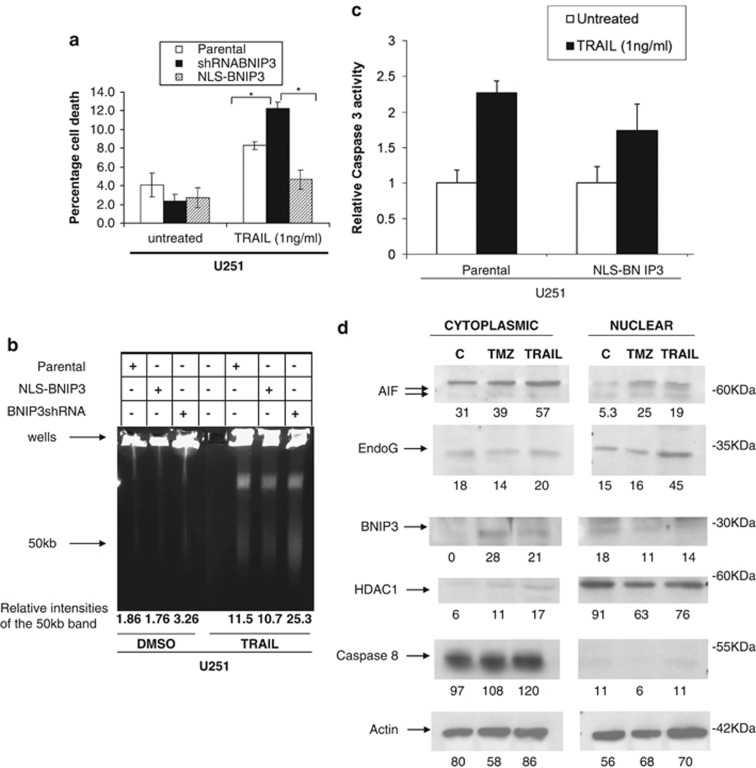Figure 4.
TRAIL-induced apoptosis is blocked by nuclear BNIP3. (a) U251 parental, U251shRNABNIP3 and U251NLS-BNIP3 stable cells were treated with 1 ng/ml of TRAIL for 24 h or DMSO for control. Percentage cell death was determined by acridine orange staining. Error bars represent the S.E. determined from three independent experiments. * denotes a P-value <0.05 representing statistical significance between U251 parental and U251shRNABNIP3, as well as between U251shRNABNIP3 and U251NLS-BNIP3. (b) U251 parental, U251shRNABNIP3 and U251NLS-BNIP3 stable cells were treated with 1 ng/ml of TRAIL for 24 h or DMSO for control, and then genomic DNA was extracted and run on a BioRad pulse field gel apparatus. The arrow indicates ∼ where the 50 kb DNA fragments migrate. This experiment was repeated three times and results were quantified by densitometry. (c) U251 parental and U251NLS-BNIP3 stable cells were treated with 1 ng/ml TRAIL for 24 h. Relative caspase 3 activity was measured as outlined in the Materials and Methods section. These results are representative of the three independent experiments. (d) Cytoplasmic and nuclear fractions were isolated from U251 cells that were untreated,or treated with TMZ and TRAIL as above. The lysates were western blotted for AIF, EndoG, BNIP3 (T7 antibody), HDAC1 (nuclear protein) and caspase 8 (cytoplasmic protein). Caspase 8 and HDAC1 were used for cytoplasmic and nuclear controls. The blots were stripped and reprobed with antibodies against actin for loading control

